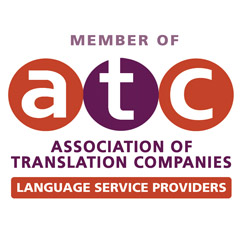Transcreation is about more than just changing words from one language to another. It’s like an art where we need to grasp cultural differences, tone, and context to make sure our message reaches everyone clearly. In this article, we’ll explore it in detail, including how it works, its advantages, difficulties, and how it’s different from plain translation.
Introduction to Transcreation
Transcreation blends “translation” and “creation,” going beyond simply swapping words between languages. Its aim is to keep the core of the original message intact while making it relevant to another culture and language. Unlike regular translation, which sticks closely to the original text, transcreation aims for maximum impact and resonance with the new audience.
Understanding Literal Translation vs. Transcreation
Importance of Context
Literal translation can miss out on important cultural cues and context, which can result in misunderstandings or messages that don’t hit the mark. Transcreation takes these aspects into account, making sure the message stays meaningful and powerful across different cultures.
The Process
Research and Understanding
Transcreation starts by diving deep into research to understand the cultural and language subtleties of the audience. This means getting to know their values, likes, and how they communicate, all to create a message that feels genuine to them.
Creative Adaptation
After finishing the research, transcreation involves creatively adapting the content to reflect the original message in a way that fits the culture. This might mean rewriting, changing images, or adjusting the tone to better connect with the audience.
Linguistic Expertise
Transcreation requires skilled linguists who can accurately translate while being creative. Transcreators need to be fluent in both the original and target languages and have a strong grasp of cultural nuances.
Examples of Successful Transcreation
Transcreation has been crucial in many successful marketing campaigns and brand slogans. Big companies like Coca-Cola, Nike, and McDonald’s have used it to reach out to people worldwide while still keeping their brand identity intact.
Challenges in Transcreation
Balancing Creativity and Accuracy
A key challenge is finding the right balance between being creative and staying accurate. While it’s important to be imaginative in adapting content, it’s just as vital to make sure the original message stays clear and true.
Cost and Time Constraints
Transcreation can demand a lot of resources, including time, skills, and teamwork among linguists, creative professionals, and marketers. Tight deadlines and limited budgets can make things tougher, so careful planning and prioritization are essential.
How to Choose an Agency
When choosing an agency, it’s vital to think about things like their experience, skills, and understanding of different cultures. Find an agency with a history of successful transcreation projects and a good grasp of your target audience’s preferences.
Conclusion
Transcreation is a valuable tool for brands aiming to grow globally while staying culturally relevant and genuine. By adopting this method, companies can bridge linguistic and cultural gaps, effectively sharing their message and building strong bonds with diverse audiences.
FAQs
1. How much does transcreation typically cost?
The price can change based on a few things like how hard the content is, the languages used, how big the project is, and how good the transcreation agency is. Usually, it costs more than regular translation because it takes extra time and creativity. But spending on it can be worth it since it helps with clear communication and connecting well with the audience.
2. How long does the transcreation process take?
The time it takes for transcreation can change based on how long and hard the content is, and how many resources are available. Some projects might finish in a few days, but others, especially big marketing campaigns or branding projects, could take weeks or even months. It’s important to set clear timelines and goals with the agency to make sure the work gets done well and on time.
3. Can any content be transcreated, or are there limitations?
Transcreation works for various content like marketing materials, slogans, websites, and product descriptions, but it’s not suitable for everything. It’s best for content needing cultural adjustment and connection with a specific audience. For very technical or legal content, where accuracy is super important, transcreation might not be the best choice. It’s crucial to think about the content and who it’s for before deciding to use it.
4. How do you measure the success of a transcreation campaign?
To measure how well a transcreation campaign does, you look at how much the audience gets involved. Important signs of success include more people visiting the website and activity on social media. It also includes higher rates of people actually buying things, and what people feel about the brand. Surveys, talks with small groups, and studying the market can all help understand how people react. In the end, a campaign succeeds if it connects with the target audience, gets them involved, and meets the business goals.
Find more on www.traductoresabc.com




